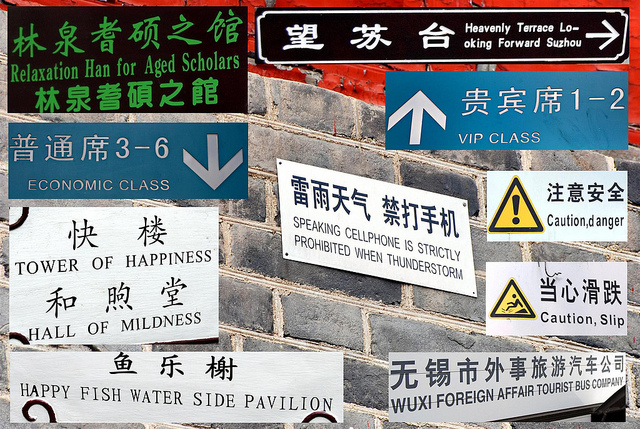This post has already been read 16863 times!
 It’s interesting how a small mistranslation can drastically change the intended meaning of a word or phrase. While the result can often be humourous, that’s not always the case.
It’s interesting how a small mistranslation can drastically change the intended meaning of a word or phrase. While the result can often be humourous, that’s not always the case.
A few years ago, a news report came out of China stating that they were going to put an end to pegging the renminbi (China’s domestic currency) against the U.S. dollar and instead allow it to float. This was a long awaited announcement that completely shocked the global currency markets sparking massive trades out of the U.S. dollar into Asian currencies.
Well, it turned out that this report was completely false. Apparently, the finance staff writers for The People’s Daily (China’s Communist party newspaper) had all taken the day off. So they left a novice writer in charge of filling in the white space for that day’s financial column. Not being a full time finance writer, she decided to comb through some recently published reports and analysis and cobble something together from that.
Her sources of information discussed, among other things, what might theoretically happen if the renminbi were allowed to float – and this is what she wrote in her column.
So what went wrong?
When the report was posted in English on the People’s Daily website, a minor mistranslation made it look as though the government had decided to revalue the currency and end pegging against the greenback. This being the information age, the news was picked up and zapped around the world in an instant. Without verifying the information, U.S. currency traders went into a selling frenzy. When the dust cleared, millions of dollars were lost – and all because of a mistranslation of an innocuous news article.
When you think about it, the same thing happens on a daily basis throughout the extended retail supply chain. We get so wrapped up in sharing information as quickly as possible that we sometimes forget to ask ourselves whether the information is useful and actionable to those whom we send it.
One example of this is the sharing of POS information between retailers and manufacturers. While it’s nice for the marketing departments to know how well products are being received by consumers, that’s pretty much all you get out of POS information.
Through such initiatives as CPFR, trading partners have tried to use aggregate POS and inventory data to try to plan the rest of the supply chain. The problem is that product flows from particular manufacturing plants through particular DCs and into particular stores. Each of these nodes has its own unique demand and supply characteristics.
But by trying to solve such a problem in aggregate, you are left with a very poor translation of demand throughout the extended supply chain, achieved at a very high cost.
Now, a new concept, the “demand driven retail supply chain”, has begun to take shape. The process that has emerged serves as universal translators, taking forecasts of true consumer demand at the point of consumption – product by product and store by store – and automatically generating projections of inventory, shipping and resource needs all the way back to the manufacturing plant.
- Small Data, Big Insights - July 14, 2016
- Is Flowcasting the Supply Chain Only for the Few? - June 3, 2016
- Philosophy - February 12, 2016
